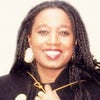Growing up in my small Maryland town, I dreamed of one day attending the New York World’s Fair. Especially after my two older brothers had traveled with their middle-school classmates to the 1964–1965 New York World’s Fair for a school trip. Unfortunately, it was to be the last one to take place in Flushing Meadows Park, NY.
The best way to explain to the younger generation what a world’s fair is would be to compare it to the expos one would attend at a convention center, but on a much grander scale.
A world’s fair was like a League of Nations that built alluring and spectacular pavilions (displays) in one designated area, over a vast acreage of land. The individual countries that participated in it had themes and motto's. They demonstrated their advancements and inventions through their displays, which ran the gamut of science and technology, automobiles, medicine, innovative and futuristic architectural models of tomorrow, and cultural and socioeconomic exhibits. Specifically, they showed prototypes of the electric typewriter, X-rays, television, telephone, computer chips, and even a talking robot. They also paid homage to those contributions made by their people.
Thirty-seven years after the Emancipation Proclamation, the presence of the American Negro was virtually invisible when the United States participated in the Paris World’s Fair of 1900 (aka The Exposition Universelle or Expo). The U.S. had an exhibit in the Multinational Palace, in the “Social Economy” section.
Negro organizations and/or prominent Negro leaders across America were not asked to participate in the fair. As a race, they had to fight for their presence to be known as citizens of the United States.
Thomas Calloway, a prominent lawyer, educator, and civil rights activist, just four months before the grand opening of the Paris World’s Fair, was determined that the American Negro have an exhibit alongside their country’s other exhibits. He spearheaded and organized a campaign, along with Daniel Murray, the Assistant Librarian of Congress, to represent the American Negro and their contributions.
He was successful in his writing campaign directed at prominent Negro men and women across the country, to express the importance of being a part of the fair. Booker T. Washington, educator, orator, and author along with W.E.B. Du Bois, were among his staunch supporters. Washington met with then-President William McKinley, and he not only agreed that the American Negro should have a presence at the fair, but he apportioned $15,000 to fund the exhibit.
Calloway turned the reins over to W.E.B. Du Bois, sociologist, historian, author, and civil-rights activist, who, along with Daniel Murray, was instrumental in providing materials. “The goal of the exhibit was to demonstrate progress and to commemorate the lives of African Americans at the turn of the century.”
Colored newspapers and periodicals were instrumental in promoting the addition to the Paris World’s Fair. However, mainstream media continued to promote the U.S.exhibit without a mention of the W.E.B. Du Bois American Negro Exhibit, which would occupy one-fourth of the exhibition space allocated to the US in the Social Economy section of the fair.
The W.E.B. Du Bois American Negro Exhibit comprised materials from African American history, socioeconomic conditions, educational institutions, and literature, along with wonderful and amazing pictures of the everyday life of the Negro. Fifty million people from all over the world graced the Paris World’s Fair of 1900. The American Negro Exhibit is currently housed in the Library of Congress. http://www.loc.gov/pictures/collection/anedub/dubois.html
Moving forward in time, the New York 1939–1940 World’s Fair welcomed thirty-three countries, exhibits that covered 1,216 ½ acres of land, with 44,932,978 visitors, and was held in Flushing Meadows Park, NY. Many U.S. companies that are still part of the fabric of America today participated with displays (General Electric, Ford, IBM, Sears, Roebuck & Company, etc.), with the exception of Westinghouse Electric.*
The Great Depression had ended in 1939. Separate but Equal laws were in effect. And yet, not enough jobs were being offered to Negroes to work at the fair. Many protested and picketed outside the World’s Fair Committee Office that was housed in the Empire State Building. According to Negro newspapers, three to four hundred Negroes were eventually employed to work on the grounds of the fair, but they felt that the number hired was an insignificant number.
However, the World’s Fair Committee had designated Italians, Negroes, and other ethnic groups an opportunity to display exhibits and contributions to represent their cultures for one week only, on the “American Common.”
Thus, July 23–28, 1940, was “Negro Week.” Their exhibit “created a living picture of the American Negro and the black contribution to the cultural development of the United States.” W.E.B. Du Bois opened Negro Week with a speech.
There were dance recitals, religious services, guest speakers, literature readings and sketches, choral and symphonic music, and exhibitions, along with a Hall of Fame Wall, listing outstanding black men and women in American history, which can currently be viewed at the Schomburg Center for Research in Black Culture in Harlem, NY. http://archives.nypl.org/scm/20752
I proudly stand on the shoulders of the many names I have only read about, who may have spoken, sung, lectured, or lent their names to Negro Week—names such as Alain Locke (one of the Talented Tenth), W.E.B. Du Bois, Hattie McDaniel, A. Phillip Randolph, Adam Clayton Powell, George Washington Carver, Marian Anderson, Mordecai W. Johnson, Richard Wright, and Mary McLeod Bethune. And the list goes on…those who have made great contributions to American history.
*Interesting tidbit: Westinghouse Electric & Manufacturing (no longer around) buried two time capsules (items inside depicted 20th-century life in America) that were buried fifty feet on the grounds of the World’s Fairs in 1939 and in 1964, to be opened 5,000 years later in the years 6939 and 6964, respectively, in the 70th Century.)
